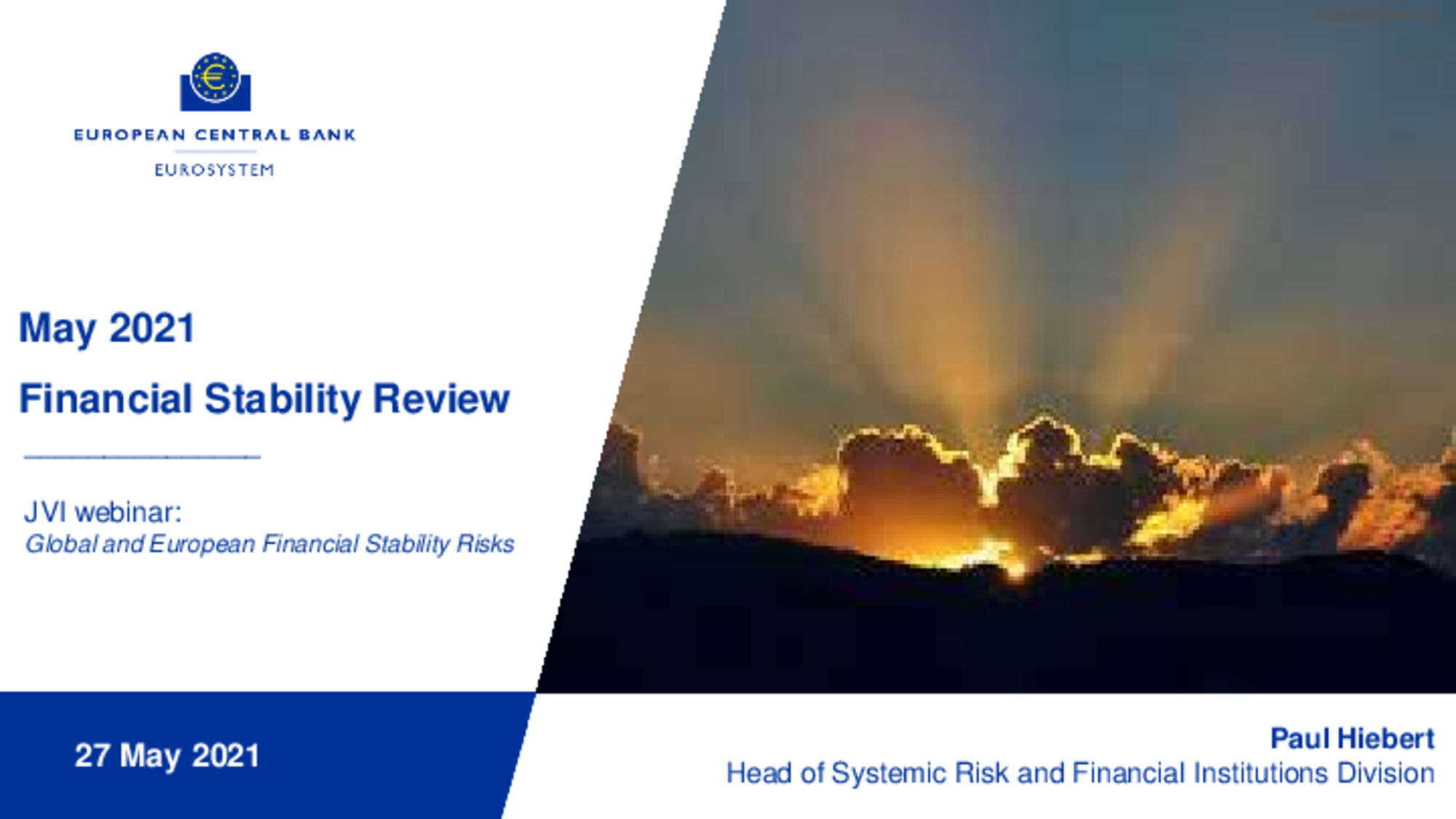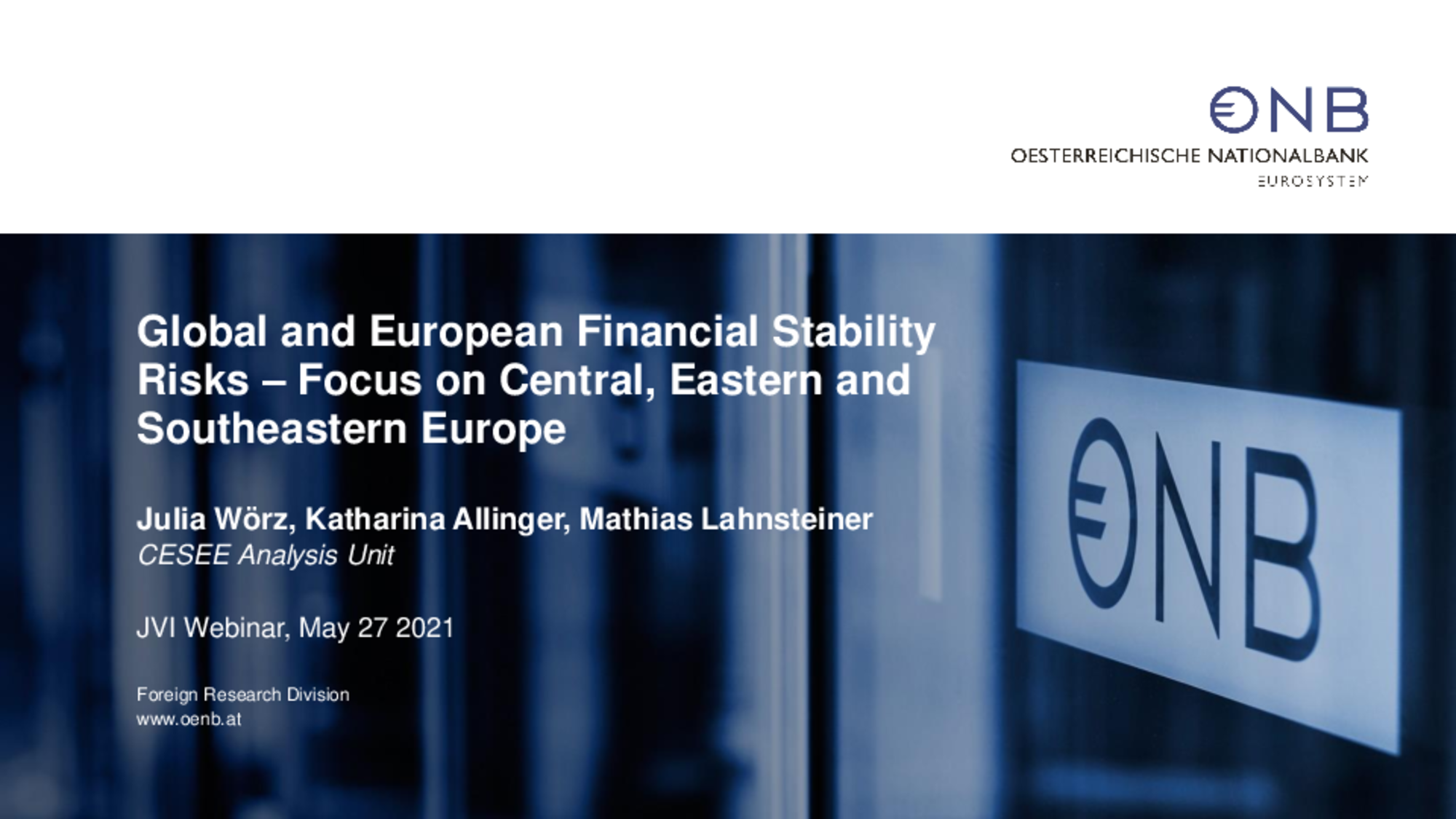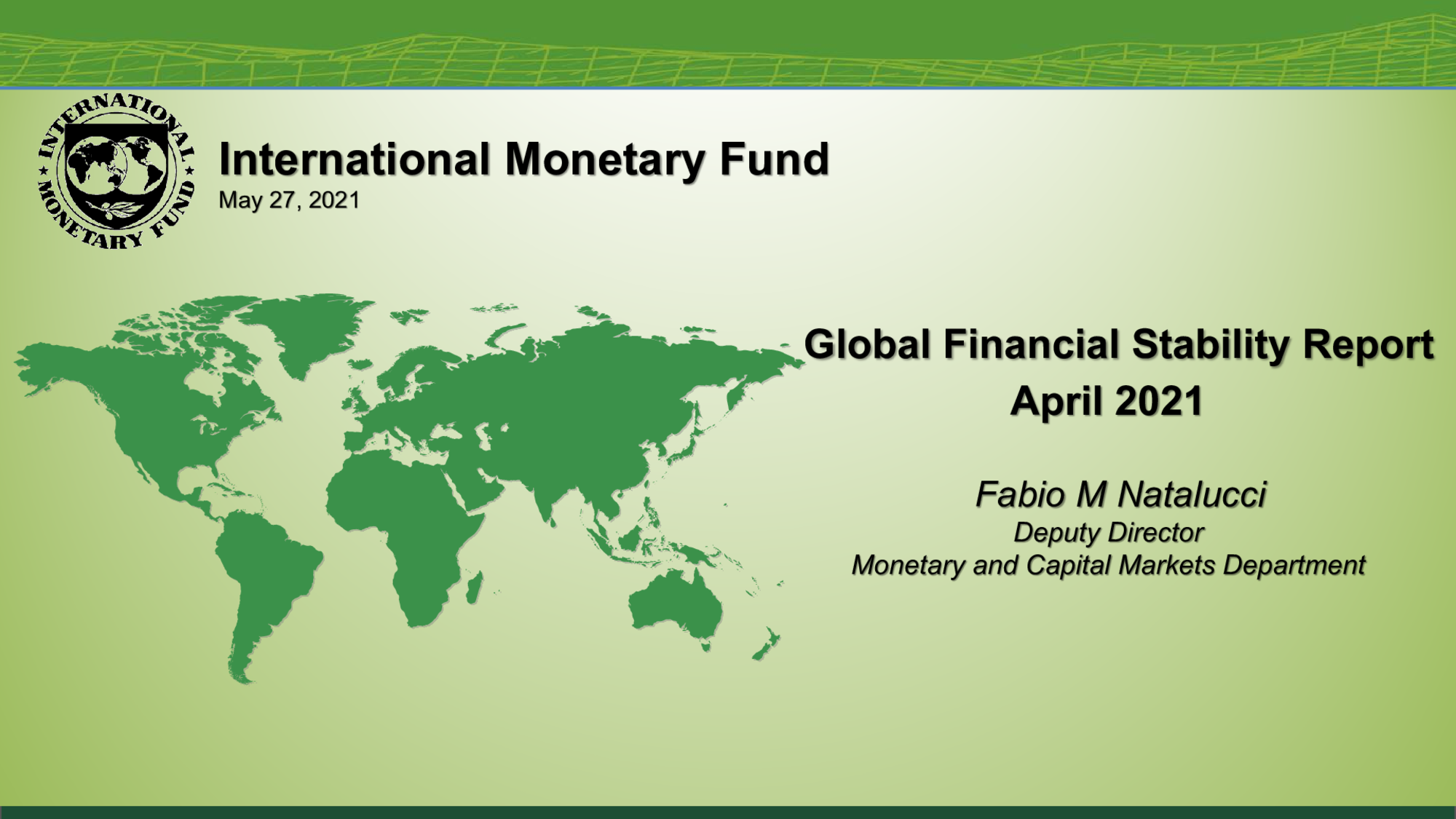Extraordinary policy measures helped to contain the financial and economic fallout of the current global health crisis. With vaccination campaigns gaining traction in many countries, the question of how and when to scale back policy measures without putting financial stability at risk becomes ever more important. Actions taken during the pandemic may have unintended consequences, such as stretched valuations and reduced clarity regarding the soundness of non-financial companies and households, which is likely to weigh on the risk appetite of banks. In addition, the recovery is expected to be heterogeneous between countries and sectors. Given large external financing needs, several emerging markets face challenges, especially if a persistent rise in US rates brings about a repricing of risk and tighter financial conditions.
This JVI webinar took stock of these and other global and European financial stability risks, putting also a spotlight on Central, Eastern and Southeastern European economies.
Mr. Fabio Natalucci (IMF) started by recalling the key global risks to financial stability in 2021. The increase in long-term interest rates, possibly leading to a repricing of risk and a tightening in financial conditions. The risk of asynchronous recovery between AEs and EMs amplified by the rise in long-term US rates while many EMs will face daunting refinancing needs. Finally, risks of unintended consequences from the unprecedented policy support since the start of the COVID-19 pandemic. More specifically, he argued that "reflation risk" currently takes center stage, as the economic recovery in the US is gaining momentum. Turning to Emerging Markets (EM), he argued that although EM local currency rates are most directly affected by developments in US interest rates, credit developments were resilient so far and portfolio flows can help covering EM financing needs. The global search for yields continues amid stretched valuations and high corporate leverage. Looking in more detail at corporate solvency risks, Mr. Natalucci argued that these are still elevated, although the situation differs significantly across sectors with Commercial Real Estate (CRE) being one of the particularly hard-hit sectors. He concluded that bank capital buffers are currently ample but unlikely to be used, due to a combination of supervisory, capacity and management hurdles.
Mr. Paul Hiebert (ECB) started his presentation by saying that the third wave of COVID-19 delayed the euro area economic recovery, but vaccinations are now catching up. At the same time, the costs of lockdown and policy support reliance are increasingly concentrated in some sectors and countries. Euro area financial markets exhibited robust risk sentiment as US yields rise. Spillovers to euro area markets from a potential US monetary policy tightening shock could be substantial though as ongoing search-for-yield has pushed corporate bond spreads to multi-year lows, making them susceptible to correction. Non-bank financial institutions have become more sensitive to a yield shock, given their increased bond portfolio duration, and exposure to US markets. Moreover, they continue to have large exposures to corporates with weak fundamentals. Looking in more detail at corporate solvency challenges, corporate insolvencies are expected to rise going forward as the reliance on debt has increased among a tail of already vulnerable firms amid growing roll-over risks. Corporate stress, however, may spill over to other parts of the economy. Euro area residential real estate remains strong, especially in some countries, supported by strong household income, whereas commercial real estate has come under severe pressure. Market sentiment vis-à-vis euro area banks improved, despite poor profitability with loan loss provisions being the main factor weighing on profitability. Mr. Hiebert argued in favor of a combination of targeted and tailored economic policies to support viable borrowers, improved credit risk management and use of capital buffers, effective NPL solution and a macroprudential approach for non-bank financial institutions. He concluded by briefly discussing risks to financial stability from physical climate risk drivers and transition climate risk drivers.
Ms. Julia Woerz (OeNB) focused in her presentation on the situation in Central, Eastern and Southeastern Europe. She argued that financial stability risks have increased but banking sectors in the region show high capital and liquidity buffers. Although asset quality deterioration in the banking sector was not reflected in end-2020 NPL ratios, the end of loan repayment moratoria and moratoria on enforcement measures is expected to lead to a rise in NPLs going forward. Tier 1 capital ratios have been stable or increasing throughout 2020 in most countries, partially due to restrictions on dividend payouts and releases of capital buffers. Paired with good NPL coverage, the buffers to cope with potentially increasing credit risk appear to be ample. The share of government debt denominated in foreign currency had declined until 2019 but increased somewhat during the COVID-19 crisis. Ms. Woerz concluded by sharing some results from the Fall 2020 OeNB Euro Survey. The results show that the take-up of loan moratoria by individuals with loans in opt-out countries (HU, MK, RS) was much higher than in opt-in countries. In opt-in countries, the extent to which individuals were affected by COVID-19 was the key determinant, while in opt-out countries, the number and type of loan were the most important determinants. Moreover, individuals who ceased to use moratoria by Fall 2020 were not more likely in arrears than individuals who did not make use of the moratoria.
Reiner Martin, Lead Economist, JVI












